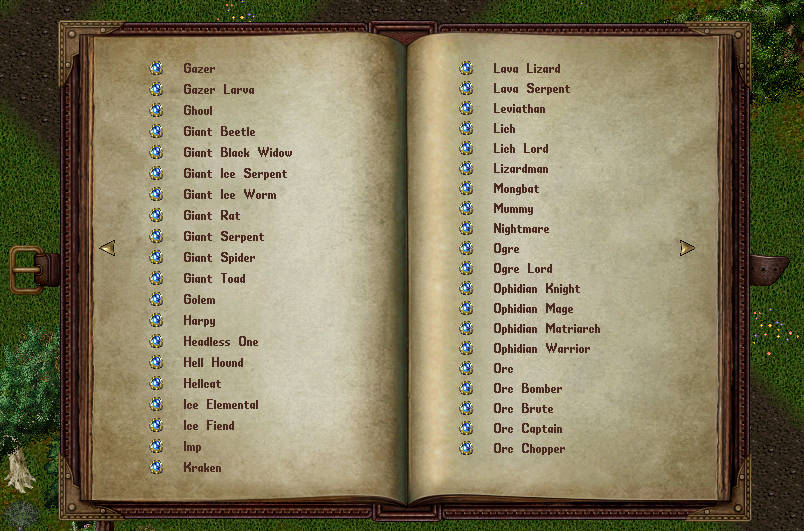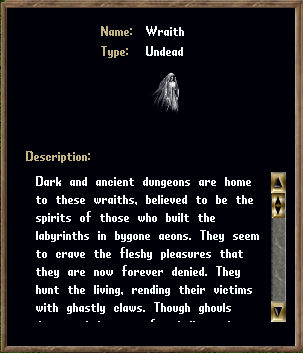In-Game Bestiary
A simply UI that acts as a catalogue for the various creatures you can encounter in your world!
It can be accessed with the player-level command "[bestiary"
Each entry details some lore behind each creature
The script comes pre-loaded with 126 entries of the most common creatures found in UO.
It's also super easy to update with your own creatures.

This does NOT the creature's stats or skills, it's just for flavor and story telling purposes.
Most of the lore for these entries were collected from www.uoguide.com.
A few were copied from sources like Wikipedia or made up by me.
Entry Examples:


Adding Entries:
There's 3 locations you'll have to edit to add your own entry.
Go into Bestiary.cs and find these lines:
Don't forget to change that number (126) to reflect the total number of entries you've added when you're done.
At the bottom of the entries list, add your own entry:
example:
Then, under that, find the list of entries that looks like this:
Go to the bottom of the list and add your own:
Finally, scroll down to the bottom of the script and add your creature's information.
Right below the last entry, add your own:
In your Entry, you can either use your creature's BodyID, which will be looked u in teh shrink table,
or you can use:
To put any item in place of where the small icon of the monster will go.
A simply UI that acts as a catalogue for the various creatures you can encounter in your world!
It can be accessed with the player-level command "[bestiary"
Each entry details some lore behind each creature
The script comes pre-loaded with 126 entries of the most common creatures found in UO.
It's also super easy to update with your own creatures.

This does NOT the creature's stats or skills, it's just for flavor and story telling purposes.
Most of the lore for these entries were collected from www.uoguide.com.
A few were copied from sources like Wikipedia or made up by me.
Entry Examples:


Adding Entries:
There's 3 locations you'll have to edit to add your own entry.
Go into Bestiary.cs and find these lines:
Code:
static Bestiary()
{
_Entries = new BestiaryEntry[126];At the bottom of the entries list, add your own entry:
example:
Code:
_Entries[126] = new MyCustomCreatureEntry();Then, under that, find the list of entries that looks like this:
Code:
public static BestiaryEntry ArcticOgreLordEntry
{
get
{
return _Entries[0];
}
}
Code:
public static BestiaryEntry MyCustomCreatureEntry
{
get
{
return _Entries[126];
}
}Finally, scroll down to the bottom of the script and add your creature's information.
Right below the last entry, add your own:
Code:
public class MyCustomCreature : BestiaryEntry
{
public override string Name { get { return "My Custom Creature"; } }
public override int BodyID { get { return *bodyvalue here*; } }
public override Type CreatureType { get { return Type.Beast; } } // types include Abyssal, Beast, Elemental, Fey, Humanoid, Monster, or Undead
public override string Description { get { return "Your description here."; } }
}In your Entry, you can either use your creature's BodyID, which will be looked u in teh shrink table,
or you can use:
Code:
public override int ItemID { get { return *any ItemID here*; } }